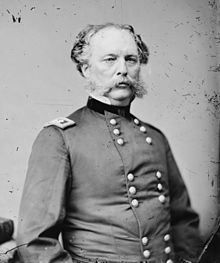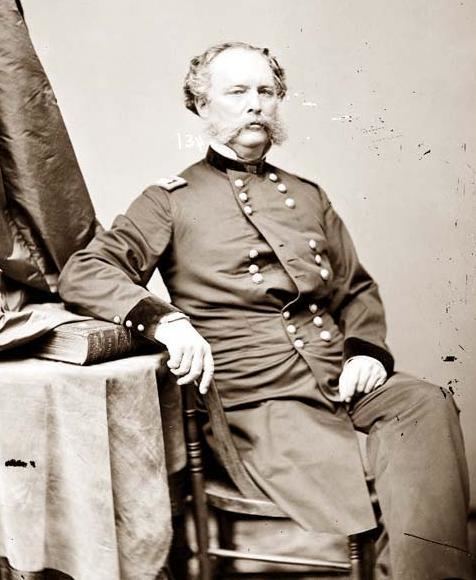Years of service 1832–1881 Commands held Inspector General | Name Randolph Marcy | |
 | ||
Born April 9, 1812Greenwich, Massachusetts ( 1812-04-09 ) Allegiance United States of AmericaUnion Education United States Military Academy Books The prairie traveler, Exploration of the Red River of L, Border Reminiscences, Thirty Years Of Army Life, Scouting & Tracking | ||
Prairie Traveler | Randolph B. Marcy | *Non-fiction, Self-Help, Travel & Geography | English | 2/4
Randolph Barnes Marcy (April 9, 1812 – November 22, 1887) was an officer in the United States Army, chiefly noted for his frontier guidebook, the Prairie Traveler (1859), based on his own extensive experience of pioneering in the west. This publication became a key handbook for the thousands of Americans wanting to cross the continent. In the Civil War, Marcy became chief of staff to his son-in-law George B. McClellan, and was later appointed Inspector General of the U.S. Army.
Contents
- Prairie Traveler Randolph B Marcy Non fiction Self Help Travel Geography English 24
- Prairie Traveler Randolph B Marcy Non fiction Self Help Travel Geography English 44
- Biography
- Legacy
- References

Prairie Traveler | Randolph B. Marcy | *Non-fiction, Self-Help, Travel & Geography | English | 4/4
Biography
Marcy was born at Greenwich, Massachusetts, and graduated from the United States Military Academy at West Point in 1832 as a lieutenant in the 5th U. S. Infantry. He married soon afterwards, and one of his children, Ellen Mary, would later marry future General-in-Chief George B. McClellan.
Marcy first saw combat while serving in the Black Hawk War in Illinois and Wisconsin. He was promoted Captain in the Mexican War, and fought at Palo Alto and Resaca de la Palma. He was then assigned to duty in Texas and Oklahoma, where he escorted emigrants, located military posts, explored the wilderness, and mapped routes. In 1852 he was in charge of the expedition that first reached the headwaters of both forks of the Red River. (It was on this expedition that he met McClellan.)
In 1857, Marcy accompanied Brigadier General Albert Sidney Johnston on the expedition against the Mormons in Utah. Here he distinguished himself on a forced march through the Rockies in midwinter, when he led his troops to safety after they had run out of provisions for two weeks. Meanwhile, his achievements and well-written military reports had attracted attention in Washington, and he was recalled to work for the Department of State. Here he prepared his acclaimed guidebook to the western trails, The Prairie Traveler: A Handbook for Overland Expeditions, with Maps, Illustrations, and Itineraries of the Principal Routes between the Mississippi and the Pacific.
Published by the U.S. Government in 1859, the Prairie Traveler quickly became an indispensable guide for the thousands of Americans wanting to reach California, Oregon, Utah, and other destinations.
Based on his own extensive experience as a pioneer, the book provided authoritative advice about reconnaissance, fieldcraft, provisions and healthcare, that would save many lives on these perilous routes. It covered key topics like hunting and tracking, and food and water supply, as well as specialist advice about the selection of horses, the avoiding of quicksands, the interpreting of smoke signals and sign language, and numerous other issues. It was a best-selling book for the remainder of the century. Andrew J. Birtle, author of U.S. Army Counterinsurgency and Contingency Operations Doctrine 1860-1941, has described the Prairie Traveler as “perhaps the single most important work on the conduct of frontier expeditions published under the aegis of the War Department.”
After completing this work, Marcy was promoted to the rank of major and posted to the Pacific Northwest, where he was assigned as paymaster. At the start of the Civil War, he returned East and served as chief of staff to McClellan, by now his son-in-law. By the end of the war, he was Inspector-General of the U. S. Army. Marcy was promoted major general of volunteers in 1868 (back-dated to 1865), and brigadier general of the U.S. Army in 1878.
Legacy
A species of garter snake, Thamnophis marcianus, is named in his honor.
